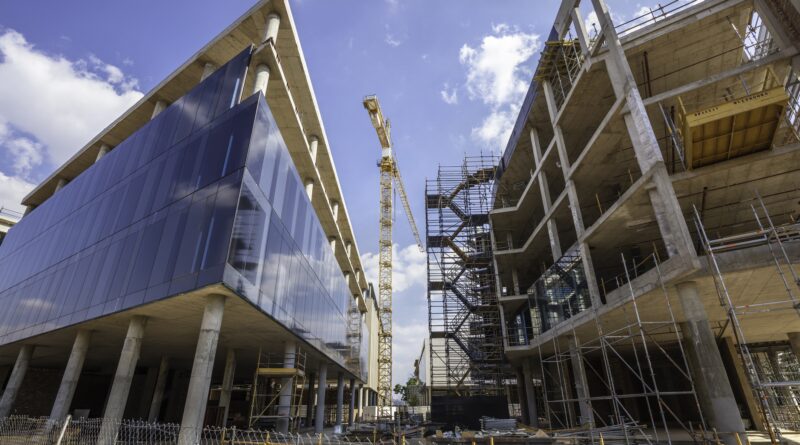10 Emerging Trends in Commercial Construction
This year, the construction industry has seen strong growth, supported by a boom in residential construction. In an era mired with slowdowns, shutdowns, and instability, commercial construction has experienced turbulence that has led to new trends. In contrast, existing trends either fall by the wayside or speed along at an increased pace.
Successful commercial construction companies like Baycrest will monitor trends in the construction industry. These trends help them to make forecasts and capitalize on future growth opportunities. Here are the trends in commercial construction to watch for in the coming year.
10 Commercial Construction Trends to Notice
1. Rising Construction Costs
The costs of construction in the commercial sector have risen, in large part due to the rise in construction materials and ongoing labor shortages. For the firms that survive, it will be from their persistence and ability to innovate in the face of a very difficult time in the commercial construction industry.
From November 2017 to November 2020, construction goods rose in cost by 5%. Add rising interest rates, and total commercial construction costs are at a height right now. New technology is being adopted to combat this, work processes are being switched around. Innovative materials are being considered, from self-healing concrete to 3D graphene, transparent aluminum, light-generating concrete, and invisible solar cells.
2. Stricter Regulations Overall
The commercial construction industry is heavily regulated. Each jurisdiction has its own specific rules, and the client may be hired by having certain needs that must be met. There are no signs of regulations like these being eased, and, more than ever, there is a reduced margin for error and waste.
3. Use of Construction Drones & Robots
Drone use in commercial construction is one of the fastest-growing trends going. More than a method of getting high-quality images, drones can be used for real-time decision-making, monitoring the construction process, managing on-site security, conducting site surveys, and more.
Robots on construction sites are already there, and they will only grow in numbers from here. Robots moving heavy or hazardous materials, constructing scaffolding, and completing repetitive tasks such as laying bricks provide tremendous value. Robotics can complete tasks efficiently and safer than human beings can. Although they are unlikely to replace construction workers, we will likely see robots working alongside humans on commercial projects at increasing diversity.
4. More Women, More Education
It’s no secret that the construction industry is always looking for more workers. More educated workers are needed in construction today, and a unique trend we are seeing in filling the void is with women stepping into a lot of these roles. More and more women are coming into the commercial construction industry. However, they still only occupy some 10.9% of construction industry jobs.
5. Recruitment of Generation Z
Generation Z, born between 1995 and 2010, is the future of every construction sector. Past generations had negative perceptions of the trade school, which greatly affected construction hiring. However, due to COVID-19 and the instability put into the economy, trade school is an attractive option for many people in this generation. Construction firms are taking advantage of that by targeting recruits, emphasizing long-term career growth potential.
6. Stricter Safety Protocols
Safety in construction is a top priority. Due to the COVID-19 pandemic, cleanliness and safety protocols have tightened, adding cost and – arguably most importantly – time to several commercial construction projects. There has been an increased union presence on construction sites and ensuring standards are being met in some cases.
7. Augmented Reality
AR makes the pre-construction part of projects more tangible and exciting for investors and clients. Through 360-degree video and AR software, one can gain a 3D visualization of future project surroundings, make fast and affordable changes to simulations of architecture and structure, and, at a construction level, engage in safety training and hazard simulations for contractors.
8. 3D Printing
There have been a lot of delays these past two years based on transportation issues and material procurement. 3D printing is skyrocketing in popularity in commercial construction, permitting firms to print their materials, sometimes directly on-site. Although this type of 3D printing continues to be rather expensive, it’s a trend that gathers more and more momentum.
9. Safety Wearables and PPE
Safety PPE is starting to incorporate more tech and wearables into the mix. For example, work boots with sensors to notify when there has been a slip and fall. The assignment of heavy machinery or tasked robots can aid in moving certain construction materials instead of using general labor. Advanced headsets that reduce noise pollution will still allow you access to the sounds of one’s surroundings. New technology is altering in a big way commercial construction PPE.
10. Mobile Accessibility to Work Sites
More commercial construction work is being done remotely or by mobile today than before. Approval meetings are sometimes being done virtually. Assets are being managed remotely. Measurement-taking is being automated. Inspections, on-site accountability, and more can typically be completed with as little as sensors and a mobile phone.




